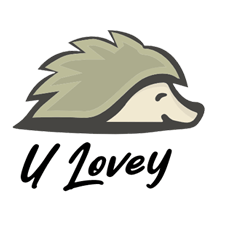
A group of pioneering Russian researchers from the Izhevsk State Medical Academy (IGMA) have reported the development of the world’s first pet food with anti-aging properties. The effectiveness of the study was already confirmed during a preliminary study.
The anti-aging, or geroprotective effect, is achieved through a complex composition of nutrients in the pet food, including some well-known geroprotective additives, Vladimir Protopopov, one of the researchers and the chief of the R&D department at pet food manufacturer Eco Style, told Petfood Industry.
“The pet food is comprised of a combination of geroprotective substances such as epigallocatechin gallate, silymarin, curcumin, resveratrol and naringenin,” Protopopov said. Geroprotectors act by regulating some signalling pathways and molecular markers associated with aging and life expectancy, he added.
“Quite a few studies have already demonstrated that these substances can regulate various targets associated with age-related changes,” Protopopov said, adding that geroprotectors can also protect animals from cancer and fight inflammation.
“In our first studies, we studied the effect of these substances in combinations, first on laboratory rodents, then on domestic cats,” Protopopov said.
In general, he explained, each nutrient can have a certain impact on aging and life expectancy. In this light, the key challenge was to find the optimal balance between different groups of nutrients, including proteins, fats and carbohydrates. The studies were originally kicked off in 2020 with support from Eco Style, and the scientists believed they eventually managed to identify the best formula.
Promising first results
During the first series of field trials, the scientists proved their product’s anti-aging properties are not just a marketing trick.
“To study the geroprotective effect of the product, we conducted research to observe various blood parameters before and after feeding animals at different time intervals,” Protopopov said.
Based on the results of a comparative study of general and biochemical blood test samples, reliable changes were identified in the decrease in the level of alanine aminotransferase (ALT) and the creatinine level three months after administrating the novel pet food.
“These indicators often increase against the background of liver or kidney diseases,” Protopopov added.
Molecular markers associated with aging were studied in plasma and isolated mononuclear fraction of peripheral blood leukocytes. “When studying molecular markers, we found a rise in proteins associated with an increase in life expectancy, such as some proteins of nutrient signaling pathways, Klotho protein, as well as mitochondrial marker proteins and regulators of their biogenesis,” Protopopov said.
On the contrary, he added, markers associated with signs and mechanisms of aging, such as inflammation, advanced glycation end-product pathways, senescence, cellular aging, and others, decreased.
All these changes indicate that the developed pet food could slow the aging process in cats, potentially leading to a longer and healthier life. However, the scientists find it difficult at this stage to predict how many years this diet can add to the average pet’s life.
Refining the recipe, plans to export
The launch of the world’s first anti-aging pet food has made waves in the Russian market, gaining widespread coverage in mainstream media. Product sales under the Eco Style brand have already started in several Russian regions as scientists continue shaping the production composition, Protopopov said.
He added the researchers still have some hypotheses about how the anti-aging properties can be further improved. They plan to test these in their next studies, which will focus on refining the composition of the pet food and explore new ways to enhance its anti-aging effects.
Eco Life also plans to export the anti-age pet food, though first sales to foreign customers are unlikely to happen before the second half of 2025. Protopopov said Russian sanitary standards do not require additional certification or licensing for the production of anti-age pet food.
“One of the important criteria for choosing geroprotectors, in addition to their effectiveness, was the possibility of including them in pet food without the need to obtain additional permits under the Russian regulations,” he said.
The scientists also prioritized using ingredients that are readily available on the market. All the compounds in the pet food are incorporated as highly purified plant extracts. Protopopov explained that, for example, the turmeric extract used contains 95% curcumin, the grape seed extract has 98.5% resveratrol, and future batches of green tea extract will contain 80% polyphenols and 45% epigallocatechin-3-gallate.
According to the researchers, these products are known to be safe for pets and humans.




